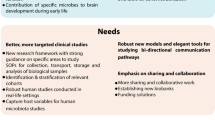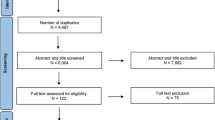Abstract
The homeostatic systems, such as the nervous and immune systems, show deterioration in aging as a consequence of the age-related oxidative-inflammatory stress establishment. The supplementation with fermented milk containing probiotic bacteria could be a good nutritional strategy to improve homeostatic system functions in aged individuals through the modulation of their redox state. The aim of the present study was to evaluate the effect of 2-week supplementation with a commercial fermented milk containing yogurt species (Lactobacillus delbrueckii subsp. bulgaricus and Streptococcus thermophilus), and the probiotic Lactobacillus casei DN-114001 on behavior, redox state, and immune cell functions of aged mice as well as on their life span. Aged female ICR-CD1 mice were supplemented with fermented milk containing these probiotics for 2 weeks. After this period, a variety of behavioral tests were performed and several parameters of redox state and function of peritoneal leukocytes were analyzed. The results showed that the 2-week supplementation of fermented milk containing probiotics improved behavior (such as muscular vigor, exploratory activity, and anxiety-like behavior) as well as the redox state and functions of peritoneal immune cells in aged mice. In conclusion, the present study shows that the supplementation with fermented milk containing probiotics for a short period of time could be a good nutritional strategy to promote healthy aging.





Similar content being viewed by others
References
Alvarado C, Alvarez P, Jiménez L, De la Fuente M (2006) Oxidative stress in leukocytes from young prematurely aging mice is reversed by supplementation with biscuits rich in antioxidants. Dev Comp Immunol 30:1168–1180. https://doi.org/10.1016/j.dci.2006.03.004
Archer J (1973) Tests for emotionality in rats and mice: a review. Anim Behav 21:205–235
Arranz L, De Castro NM, Baeza I, Maté I, Viveros MP, De la Fuente M (2010) Environmental enrichment improves age-related immune system impairment: long-term exposure since adulthood increases life span in mice. Rejuvenation Res 13:415–428. https://doi.org/10.1089/rej.2009.0989
Baeza I, De Castro NM, Giménez-Llort L, De la Fuente M (2010) Ovariectomy, a model of menopause in rodents, causes a premature aging of the nervous and immune systems. J Neuroimmunol 219:90–99. https://doi.org/10.1016/j.jneuroim.2009.12.008
Bauer ME, De la Fuente M (2016) The role of oxidative and inflammatory stress and persistent viral infections. Mech Ageing Dev 158:27–37. https://doi.org/10.1016/j.mad.2016.01.001
Bishop NA, Lu T, Yankner BA (2010) Neural mechanisms of ageing and cognitive decline. Nature 464:529–535. https://doi.org/10.1038/nature08983
Bravo JA, Forsythe P, Chew MV et al (2011) Ingestion of Lactobacillus strain regulates emotional behavior and central GABA receptor expression in a mouse via the vagus nerve. Proc Natl Acad Sci USA 108:16050–16055. https://doi.org/10.1073/pnas.1102999108
Cryan JF, Dinan TG (2012) Mind-altering microorganisms: the impact of the gut microbiota on brain and behaviour. Nat Rev Neurosci 13:701–712. https://doi.org/10.1038/nrn3346
De la Fuente M (2008) Role of neuroimmunomodulation in aging. NeuroImmunoModulation 15:213–223. https://doi.org/10.1159/000156465
De la Fuente M, Cruces J, Hernandez O, Ortega E (2011) Strategies to improve the functions and redox state of the immune system in aged subjects. Curr Pharm Des 17:3966–3993. https://doi.org/10.2174/138161211798764861
De la Fuente M, Miquel J (2009) An update of oxidation-inflammatory theory of aging: the involvement of the immune system in oxi-inflamm-aging. Curr Pharm Des 15:3003–3026. https://doi.org/10.2174/138161209789058110
de Moreno de A, Chaves S, Carmuega E, Weill R, Antóine J, Perdigón G (2008) Effect of long-term continuous consumption of fermented milk containing probiotic bacteria on mucosal immunity and the activity of peritoneal macrophages. Immunobiology 213:97–108. https://doi.org/10.1016/j.imbio.2007.07.002
Di Benedetto S, Müller L, Wenger E, Düzel S, Pawelec G (2017) Contribution of neuroinflammation and immunity to brain aging and the mitigating effects of physical and cognitive interventions. Neurosci Biobehav Rev 75:114–128. https://doi.org/10.1016/j.neubiorev.2017.01.044
Dietrich CG, Kottmann T, Alavi M (2014) Commercially available probiotic drinks containing Lactobacillus casei DN-114001 reduce antibiotic-associated diarrhea. World J Gastroenterol 20:15837–15844. https://doi.org/10.3748/wjg.v20.i42.15837
Dong H, Rowland I, Thomas LV, Yaqoob P (2013) Immunomodulatory effects of a probiotic drink containing Lactobacillus casei Shirota in healthy older volunteers. Eur J Nutr 52:1853–1863. https://doi.org/10.1007/s00394-012-0487-1
Flint AJ (1994) Epidemiology and comorbidity of anxiety disorders in the elderly. Am J Psychiatry 151:640–649. https://doi.org/10.1176/ajp.151.5.640
Floyd RA, Hensley K (2002) Oxidative stress in brain aging. Implications for therapeutics of neurodegenerative diseases. Neurobiol Aging 23:795–807. https://doi.org/10.1016/S0197-4580(02)00019-2
Guayerbas N, Catalán M, Víctor VM, Miquel J, De la Fuente M (2002) Relation of behaviour and macrophage function to life span in a murine model of premature immunosenescence. Behav Brain Res 134:41–48. https://doi.org/10.1016/S0166-4328(01)00449-1
Guayerbas N, Puerto M, Víctor VM, Miquel J, De la Fuente M (2002) Leukocyte function and life span in a murine model of premature immunosenescence. Exp Gerontol 37:249–256. https://doi.org/10.1016/S0531-5565(01)00190-5
Guillemard E, Tondu F, Lacoin F, Schrezenmeir J (2010) Consumption of a fermented dairy product containing the probiotic Lactobacillus casei DN-114001 reduces the duration of respiratory infections in elderly in a randomised controlled trial. Br J Nutr 103:58–68. https://doi.org/10.1017/S0007114509991395
Heshmati J, Farsi F, Shokri F et al (2018) A systematic review and meta-analysis of the probiotics and synbiotics effects on oxidative stress. J Funct Foods 46:66–84. https://doi.org/10.1016/j.jff.2018.04.049
Hunsche C, Cruces J, Garrido A, Hernandez O, De la Fuente M (2018) Dietary supplementation with fermented milk containing probiotics improves behaviour and immune response of aged mice. J Prob Health 6:201. https://doi.org/10.4172/2329-8901.1000201
Hunsche C, de Toda IM, De la Fuente M (2019) Impacts of the late adulthood diet-induced obesity onset on behavior, immune function, redox state and life span of male and female mice. Brain Behav Immun 78:65–77. https://doi.org/10.1016/j.bbi.2019.01.010
Hunsche C, Hernandez O, Gheorghe A, Díaz LE, Marcos A, De la Fuente M (2018) Immune dysfunction and increased oxidative stress state in diet-induced obese mice are reverted by nutritional supplementation with monounsaturated and n-3 polyunsaturated fatty acids. Eur J Nutr 57:1123–1135. https://doi.org/10.1007/s00394-017-1395-1
Janssen I, Heymsfield SB, Ross R (2002) Low relative skeletal muscle mass (sarcopenia) in older persons is associated with functional impairment and physical disability. J Am Geriatr Soc 50:889–896. https://doi.org/10.1046/j.1532-5415.2002.50216.x
Johansson SE, Sundquist J (1999) Change in lifestyle factors and their influence on health status and all-cause mortality. Int J Epidemiol 28:1073–1080
Kalueff AV, Stewart AM, Song C, Berridge BC, Graybiel AM, Fentress JC (2016) Neurobiology of rodent self-grooming and its value for translational neuroscience. Nat Rev Neurosci 17:45–59. https://doi.org/10.1038/nrn.2015.8
Kalueff AV, Tuohimaa P (2004) Grooming analysis algorithm for neurobehavioural stress research. Brain Res Brain Res Protoc 13:151–158. https://doi.org/10.1016/j.brainresprot.2004.04.002
Keller K, Engelhardt M (2014) Strength and muscle mass loss with aging process. Age and strength loss. Muscles Ligaments Tendons J 3:346–350. https://doi.org/10.11138/mltj/2013.3.4.346
Kullisaar T, Zilmer M, Mikelsaar M et al (2002) Two antioxidative lactobacilli strains as promising probiotics. Int J Food Microbiol 72:215–224. https://doi.org/10.1016/S0168-1605(01)00674-2
Landete JM, Gaya P, Rodríguez E et al (2017) Probiotic bacteria for healthier aging: immunomodulation and metabolism of phytoestrogens. Biomed Res Int 2017:5939818. https://doi.org/10.1155/2017/5939818
Lin MY, Yen CL (1999) Antioxidative ability of lactic bacteria. J Agric Food Chem 47:1460–1466. https://doi.org/10.1021/jf981149l
Lipkind D, Sakov A, Kafkafi N, Elmer GI, Benjamini Y, Golani I (2004) New replicable anxiety-related measures of wall vs center behaviour of mice in the open field. J Appl Physiol 97:437–459. https://doi.org/10.1152/japplphysiol.00148.2004
Maneerat S, Lehtinen MJ, Childs CE et al (2014) Consumption of Bifidobacterium lactis Bi-07 by healthy elderly adults enhances phagocytic activity of monocytes and granulocytes. J Nutr Sci 2:e44. https://doi.org/10.1017/jns.2013.31
Martinez de Toda I, Maté I, Vida C, Cruces J, DelaFuente M (2016) Immune function parameters of biological age and predictor of longevity. Aging 8:3110–3119. https://doi.org/10.18632/aging.101116
Masella R, Di Benedetto R, Vari R, Filesi C, Giovannini C (2005) Novel mechanisms of natural antioxidant compounds in biological systems: involvement of glutathione and glutathione-related enzymes. J Nutr Biochem 16:577–586. https://doi.org/10.1016/j.jnutbio.2005.05.013
Messaoudi M, Lalonde R, Violle N et al (2011) Assessment of psychotropic-like properties of a probiotic formulation (Lactobacillus helveticus R0052 and Bifidobacterium longum R0175) in rats and human subjects. Br J Nutr 105:755–764. https://doi.org/10.1017/S0007114510004319
Mikelsaar M, Zilmer M (2009) Lactobacillus fermentum ME-3- an antimicrobial and antioxidative probiotic. Microb Ecol Health Dis 21:1–27. https://doi.org/10.1080/08910600902815561
Mohammadi AA, Jazayeri S, Khosravi-Darani K et al (2015) Effects of probiotics on biomarkers of oxidative stress and inflammatory factors in petrochemical workers: a randomized, double-blind, placebo-controlled trial. Int J Prev Med 6:82. https://doi.org/10.4103/2008-7802.164146
Molarius A, Berglund K, Eriksson C et al (2007) Socioeconomic conditions, lifestyle factors, and self-rated health among men and women in Sweden. Eur J Public Health 17:125–133. https://doi.org/10.1093/eurpub/ckl070
Nyberg L, Lövdén M, Riklund K, Lindenberger U, Bäckman L (2012) Memory aging and brain maintenance. Trends Cogn Sci 16:292–305. https://doi.org/10.1016/j.tics.2012.04.005
Saka E, Graybiel AM (2003) Pathophysiology of Tourette´s syndrome: striatal pathways revisited. Brain Dev 25(1):15–19. https://doi.org/10.1016/S0387-7604(03)90002-7
Savignac HM, Kiely B, Dinan TG, Cryan JF (2014) Bifidobacteria exert strain-specific effects on stress-related behavior and physiology in BALB/c mice. Neurogastroenterol Motil 26:1615–1627. https://doi.org/10.1111/nmo.12427
Schulz D, Huston JP, Jezek K et al (2002) Water maze performance, exploratory activity, inhibitory avoidance and hippocampal plasticity in aged superior and inferior learners. Eur J Neurosci 16:2175–2185. https://doi.org/10.1046/j.1460-9568.2002.02282.x
Seidler RD, Bernard JA, Burutolu TB et al (2010) Motor control and aging: links to age-related brain structural, functional, and biochemical effects. Neurosci Biobehav Rev 34:721–733. https://doi.org/10.1016/j.neubiorev.2009.10.005
Sharma R, Kapila R, Kapasiya M, Saliganti V, Dass G, Kapila S (2014) Dietary supplementation of milk fermented with probiotic Lactobacillus fermentum enhances systemic immune response and antioxidant capacity in aging mice. Nut Res 34:968–981. https://doi.org/10.1016/j.nutres.2014.09.006
Shen Q, Shang N, Li P (2011) In vitro and in vivo antioxidant activity of Bifidobacterium animalis 01 isolated from centenarians. Curr Microbiol 62:1097–1103. https://doi.org/10.1007/s00284-010-9827-7
Shu Q, Gill HS (2001) A dietary probiotic (Bifidobacterium lactis HN019) reduces the severity of Escherichia coli O157:H7 infection in mice. Med Microbiol Immunol 189:147–152. https://doi.org/10.1007/s430-001-8021-9
Simon P, Dupuis R, Costentin J (1994) Thigmotaxis as an index of anxiety in mice. Influence of dopaminergic transmissions. Behav Brain Res 61:59–64. https://doi.org/10.1016/0166-4328(94)90008-6
Spyropoulos BG, Mislakos EP, Fotiadis C, Stoidis CN (2011) Antioxidant properties of probiotics and their protective effects in the pathogenesis of radiation-induced enteritis and colitis. Dig Dis Sci 56:285–294. https://doi.org/10.1007/s10620-010-1307-1
Ruffieux J, Keller M, Lauber B, Taube W (2015) Changes in standing and walking performance under dual-task conditions across the lifespan. Sports Med 45:1739–1750. https://doi.org/10.1007/s40279-015-0369-9
Turchet P, Laurenzano M, Auboiron S, Antoine JM (2003) Effect of fermented milk containing the probiotic casei DN-114001 on winter infections in free-living elderly subjects: a randomised, controlled pilot study. J Nutr Health Aging 7:75–77
Ushakova G, Fed´kiv O, Prykhod´ko O, Pierznowski S, Kruszewska D (2009) The effect of long-term lactobacilli (lactic acid bacteria) enteral treatment on the central nervous system of growing rats. J Nutr Biochem 20:677–684. https://doi.org/10.1016/j.jnutbio.2008.06.010
Wang Y, Wu Y, Wang Y et al (2017) Antioxidant properties of probiotic bacteria. Nutrients 9:521. https://doi.org/10.3390/nu9050521
Yasui H, Kiyoshima J, Hori T, Shida K (1999) Protection against influenza virus infection of mice fed Bifidobacterium breve YIT4064. Clin Diagn Lab Immunol 6:186–192
Zanoni S, Pompei A, Cordisco L, Amaretti A, Rossi M, Matteuzzi D (2008) Growth kinetic on oligo- and polysaccharides and promising features of three antioxidative potential probiotic strains. J Appl Microbiol 105:1266–1276. https://doi.org/10.1111/j.1365-2672.2008.03860.x
Acknowledgements
This work was supported by Grants from the Research Group of Madrid Complutense University (910379ENEROINN) and FIS (PI15/01787) of Institute de Salud Carlos III – Fondo Europeo de Desarrollo Regional (ISCIII-FEDER). C. H. is the recipient of a PhD fellowship from CNP-q-Brazil.
Author information
Authors and Affiliations
Corresponding author
Ethics declarations
Conflict of interest
The authors declare no conflict of interest.
Ethical Approval
The experiment procedures and handling of animals were performed with approval of the Committee for Animal Experimentation of the Complutense University of Madrid (ref. CEA-UCM 06/2012) and were conducted in accordance with the guidelines and protocols of the Royal Decree 53/2013 regarding the care and use of laboratory animals.
Additional information
Publisher's Note
Springer Nature remains neutral with regard to jurisdictional claims in published maps and institutional affiliations.
Rights and permissions
About this article
Cite this article
Hunsche, C., Cruces, J. & De la Fuente, M. Improvement of Redox State and Functions of Immune Cells as Well as of Behavioral Response in Aged Mice After Two-Week Supplementation of Fermented Milk with Probiotics. Curr Microbiol 76, 1278–1289 (2019). https://doi.org/10.1007/s00284-019-01759-9
Received:
Accepted:
Published:
Issue Date:
DOI: https://doi.org/10.1007/s00284-019-01759-9




